-
 9 min. read
9 min. read
-
 Macy Storm
Macy Storm Content Marketing Consultant
Content Marketing Consultant
- Macy is a content marketing consultant with over five years of experience creating content for dozens of industries including home services, recreation, and education. She’s written about every marketing topic under the sun, from SEO to AI to email marketing. Her work has been featured by Search Engine Journal, HubSpot, Entrepreneur, Clutch, and more. In her free time, Macy enjoys crafting, reading comic books, and walking her dog Daisy.
Looking to increase sales for your ecommerce or bricks-and-clicks business? With ecommerce optimization, you can help improve your store’s online performance to turn more leads into customers for your business. Keep reading to learn what ecommerce optimization is and how to optimize your ecommerce store to maximize sales for your business!
P.S. Want to get the latest tips and tricks for marketing your ecommerce store? Join 200,000+ savvy marketers by subscribing to Revenue Weekly!
Partner with a team of ecommerce masters!
WebFX campaigns have delivered more than 14,936,451 ecommerce transactions in the last 5 years
Read the Case Studies

What is ecommerce optimization?
Ecommerce optimization is the process of improving your website to increase leads and sales for your business. You can optimize multiple parts of your site, from your product listings to your navigation, to help deliver a better user experience for your customers.
How to optimize your ecommerce store in 7 steps
Want to improve your audience’s experience on your site?
Check out these seven steps on how to optimize your ecommerce store to increase sales for your business!
1. Create a clear and easy-to-use navigation
If you want to do ecommerce conversion optimization right, start with your navigation. Your navigation impacts how users move about your site and find your products. If you have disorganized navigation that’s difficult to use, your audience will become discouraged and leave your site.
So, how do you create navigation that works for your audience? If you want to make it easy for your leads to find the right products, start by organizing your navigation. For example, Allbirds organizes their products by men and women, then breaks them down by shoes, apparel, and accessories.
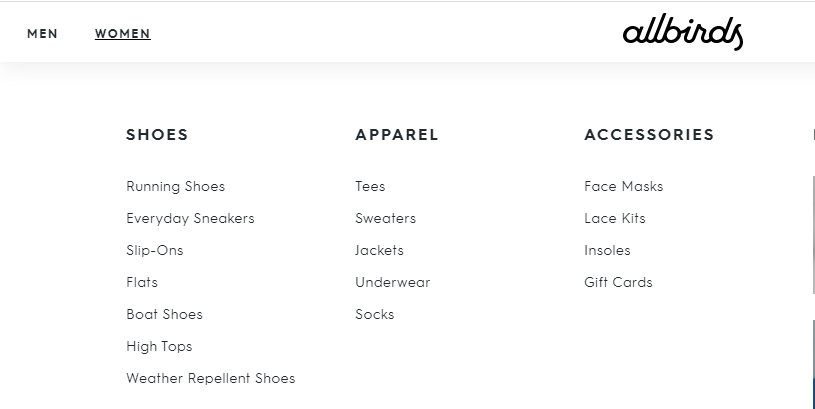 This navigation is organized and easy to browse, so shoppers can find what they need quickly. When you build your navigation, you want to organize your products into categories to make it easy for shoppers to find what they need. You can use broad headings to make it easier to organize.
This navigation is organized and easy to browse, so shoppers can find what they need quickly. When you build your navigation, you want to organize your products into categories to make it easy for shoppers to find what they need. You can use broad headings to make it easier to organize.
Additionally, continually test and optimize your navigation. What you think works for your audience may not end up being the best option for them — you may need to revamp and adjust to deliver a better experience.
2. Beef up your product listings
A critical component of ecommerce optimization is optimizing your product listings. Your customers ultimately use your product listings to determine if they want to buy your product. But if you don’t have an optimized listing, you may miss out on sales for your business.
So, how do you create an optimized product listing?
- Use a descriptive product title: When you list your products on your site, provide a descriptive product title for your items. Your title is one of the first pieces of information your audience sees, which helps them determine if your product is what they need.
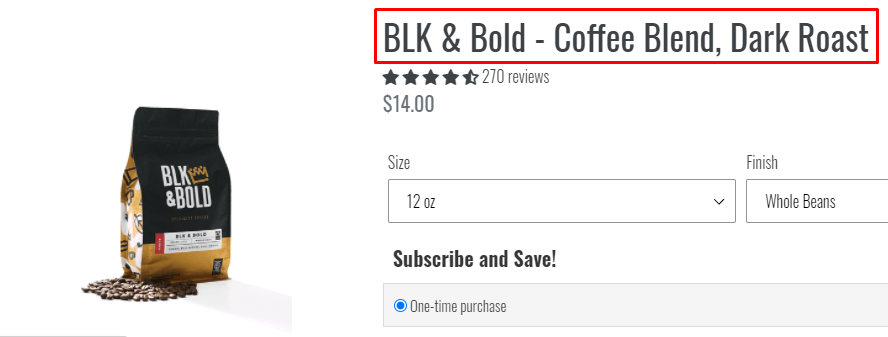
- Provide important product details: When you list your product, include critical details that will help convince prospects to purchase your products. From the product size to how the products are made, you can help provide details that show shoppers why they should buy.
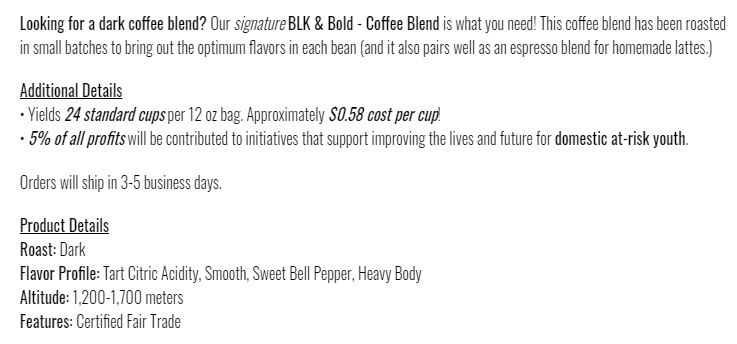
- Add product options: If you offer a product in multiple sizes, colors, or styles, include that as part of your product listing. It will make it easier for shoppers to see their options in one place rather than multiple listings.
 By creating an in-depth and informative listing, you’ll help prospects feel more informed about your products, so they’re more likely to purchase.
By creating an in-depth and informative listing, you’ll help prospects feel more informed about your products, so they’re more likely to purchase.
3. Add high-quality product photos
If you want to know how to optimize your ecommerce store, start by adding high-quality product photos to your listings. Your product photos play a critical role in helping your business sell products online. Since people can’t see your products in person, they rely on your product photos to help them determine if they want to buy your product.
To optimize your product listings, you need to add photos that provide your audience with details about what you offer. You want to take pictures of your product from every angle and images of your product in use. Your product photos should also be high-quality and clear, so shoppers can get a good look at what you offer.
In this example from Cheekbone, you can see high-quality photos of their product, as well as the product in use.  If you want to do ecommerce conversion optimization right, take the time to shoot quality product photos, so you can show shoppers why they should buy your products.
If you want to do ecommerce conversion optimization right, take the time to shoot quality product photos, so you can show shoppers why they should buy your products.
4. Optimize your product listings for critical keywords
A critical component to ecommerce conversion optimization is keyword integration. If you want your products to appear in relevant search results, you must optimize your product listings for the right keywords. To find relevant product keywords, you must conduct keyword research.
You can use a keyword research tool like KeywordsFX to help you find relevant terms. 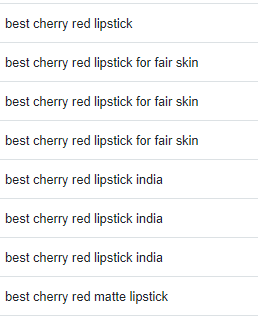 When you look at your keyword list, focus on long-tail keywords. Long-tail keywords contain three or more words, like “cherry red lipstick.” These keywords, since they’re more specific, drive more qualified traffic to your site.
When you look at your keyword list, focus on long-tail keywords. Long-tail keywords contain three or more words, like “cherry red lipstick.” These keywords, since they’re more specific, drive more qualified traffic to your site.
By integrating relevant keywords into your product listings, you’ll help your listings appear in more relevant search results. This optimization will help you drive more qualified traffic to your site so that you can earn more customers for your business.
5. Optimize your site for mobile
Another vital part of ecommerce conversion optimization is delivering a positive mobile experience. Considering 76% of consumers shop on a smartphone, you must have a site that operates smoothly on mobile so that you can deliver a positive experience. To ensure your ecommerce website functions on mobile, use our company’s mobile-friendly checker.
This checker will analyze your site’s mobile-friendliness to determine if you deliver a positive mobile experience. If your site isn’t mobile-friendly, you can optimize it by integrating responsive design. Responsive design enables your site to adapt to whatever device a user uses, whether it’s a tablet or smartphone.
Your site will automatically adjust to fit their screen so that they can have the best experience browsing your site. By delivering a positive mobile experience, you’ll keep prospects engaged on your site longer, which will lead to increased sales for your business.
6. Use clear call to action (CTA) buttons
When people visit your site, you ultimately want them to purchase from your business. Without a clear call to action (CTA) button, though, your customers may not know how to proceed. That’s why creating a CTA button is a critical component to optimize your ecommerce website.
Your CTA button guides people to act. For example, if you want them to add a product to their cart, having a button that says “add to cart” guides them to take that action. 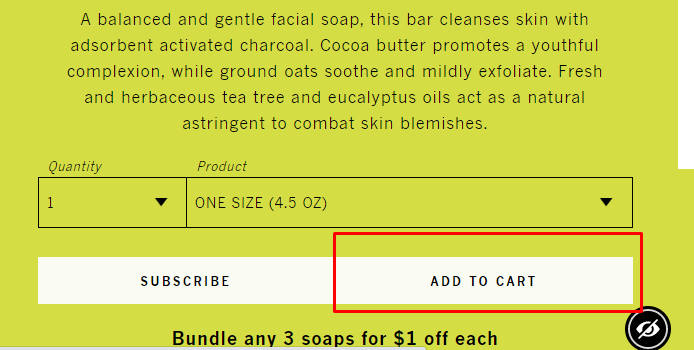 When you craft your CTA button, you want it to stand out on the page, so shoppers can find it quickly and click.
When you craft your CTA button, you want it to stand out on the page, so shoppers can find it quickly and click.
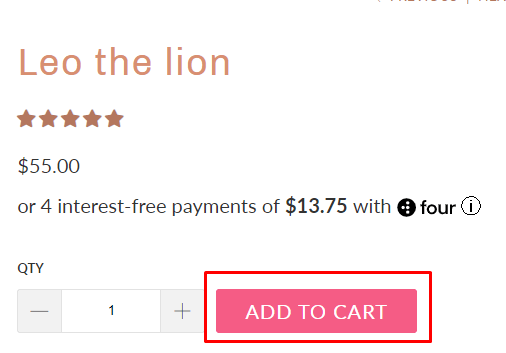 By having a clear CTA, you’ll guide more users to buy your products, which will increase revenue for your business.
By having a clear CTA, you’ll guide more users to buy your products, which will increase revenue for your business.
7. Focus on cart abandonment
One of the critical components to ecommerce conversion optimization is focusing on cart abandonment. Over 98% of online shopping orders were abandoned in 2022. There are multiple reasons people abandon their carts, from getting distracted to discovering increased costs in their cart. There are multiple steps you can take to improve cart abandonment. Here are a few tips for helping you turn cart abandonment into sales:
- Improve your checkout process: If you want to prevent people from abandoning their carts, look at your cart checkout process. Analyze the process to see if there are hiccups that may prevent users from completing a purchase, like entering shipping or payment information. Implement checkout process optimization best practices to make it easy for shoppers to complete their purchase.
- Be upfront with the costs: One of the biggest reasons for cart abandonment is unexpected costs, whether it’s shipping or other fees. Make sure you’re upfront about fees, so users know what to expect when they add items to their cart.
- Send abandoned cart emails: If people abandon their carts, those sales aren’t lost forever. You can recover sales by sending abandoned cart emails to remind users of the products they put in their cart. Use a tool like EmailMarketingFX to trigger emails to send to users who abandon carts and bring them back to purchase.
When you build an abandoned cart recovery strategy, you’ll help your ecommerce business earn more revenue that enables you to grow online.
Need help with your ecommerce optimization?
Ecommerce optimization is critical if you want to improve your audience’s experience on your site and increase revenue for your company. However, if you aren’t sure how to optimize your ecommerce store, WebFX can help. With a team of over 500 marketing experts, we can help you optimize your ecommerce site to drive results.
In the past five years, we’ve driven over $10 billion in revenue and managed over 14.9 million transactions. You can count on us to deliver a campaign that helps your business thrive online. Ready to increase revenue for your business?
Contact us online or call us today at 888-601-5359 to speak with a strategist about our ecommerce marketing services!
-
 Macy is a content marketing consultant with over five years of experience creating content for dozens of industries including home services, recreation, and education. She’s written about every marketing topic under the sun, from SEO to AI to email marketing. Her work has been featured by Search Engine Journal, HubSpot, Entrepreneur, Clutch, and more. In her free time, Macy enjoys crafting, reading comic books, and walking her dog Daisy.
Macy is a content marketing consultant with over five years of experience creating content for dozens of industries including home services, recreation, and education. She’s written about every marketing topic under the sun, from SEO to AI to email marketing. Her work has been featured by Search Engine Journal, HubSpot, Entrepreneur, Clutch, and more. In her free time, Macy enjoys crafting, reading comic books, and walking her dog Daisy. -

WebFX is a full-service marketing agency with 1,100+ client reviews and a 4.9-star rating on Clutch! Find out how our expert team and revenue-accelerating tech can drive results for you! Learn more
Try our free Marketing Calculator
Craft a tailored online marketing strategy! Utilize our free Internet marketing calculator for a custom plan based on your location, reach, timeframe, and budget.
Plan Your Marketing Budget

Proven Marketing Strategies

Proven Marketing Strategies
Try our free Marketing Calculator
Craft a tailored online marketing strategy! Utilize our free Internet marketing calculator for a custom plan based on your location, reach, timeframe, and budget.
Plan Your Marketing Budget
What to read next





